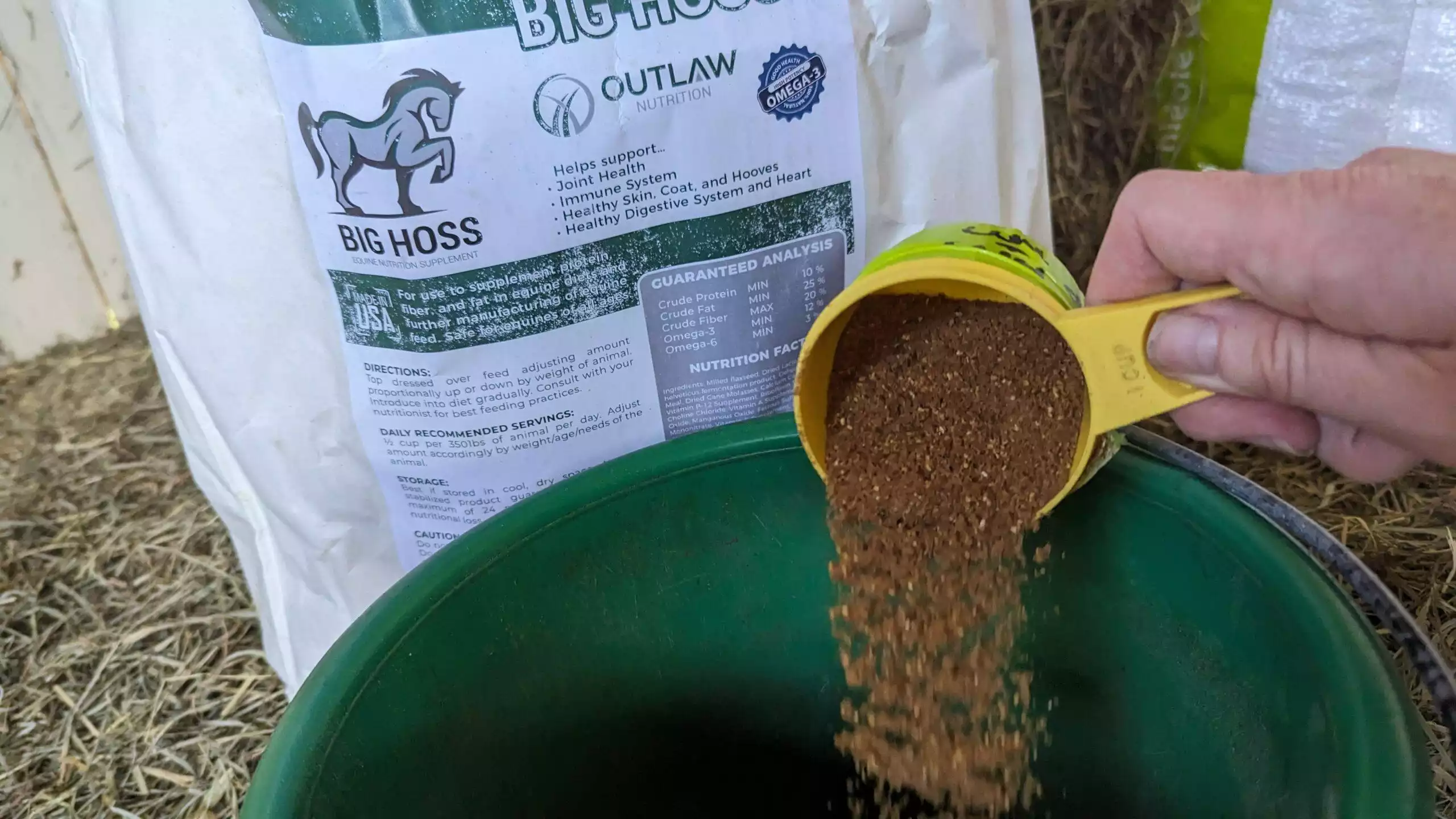The scoop on flaxseed for horses
Should you feed your horse flaxseed? Sure? Maybe? It depends. It might work for your horse, and you might need to make another adjustment to his diet if that’s the case. You will also need to consider if you want to grind the flaxseed yourself, but it’s easier to find cold milled or stabilized flaxseed for horses.
jump to shopping

There’s not a lot of bulk to flax, so it’s easy to add to meals.
Flaxseed, also known as linseed, are tiny seeds from the flax plant.
- Flax is one of the oldest known fiber plants, which actually has lovely purple flowers to boot. The seeds are rich in omega fatty acids, about 40%. There’s about 30% fiber, much more than brans, and about 20% protein.
- This can be ideal for horses, as flax is a natural anti-inflammatory agent with amazing Omega fatty acids. In a horse’s diet, there are Omega-3 fatty acids and Omega-6 fatty acids. THe 3’s are anti-inflammatory, and the 6’s are pro-inflammatory. A horse will still need Omegs-6’s, but in a much smaller amount than the Omega-3’s. Both make shine, but 3’s are more important to add to your horse’s diet. Flax is a great source of those 3’s.
- Flax, when fed whole, quickly turns slimy. There’s an aspect to the flax coating that gets jelly-like when wet or exposed to saliva. Some horses may not like this. Here’s another kicker – these seeds need to be eaten within about 15 minutes of grinding, as they become rancid quickly.
- The alternative is to find a commercially available cold milled flax that is already ground. Cold-milled flax can remain stable for 18 months, or more. It has the same benefits as stabilized flax but with an infinitely longer shelf life.
You won’t catch me grinding my horse’s flax!
A few more notes on flax.
- There is some evidence that horses can chew the seeds enough to get the benefits of those omega fatty acids, but the standard practice is to use a ground version, especially if freshness is a concern for you.
- There’s also a lot of information about how much your horse can eat per day, some sources say four ounces, some sources say an entire pound. Your veterinarian or equine nutritionist can help you figure out the best quantity for your horse. Generally speaking – four to eight ounces a day is just fine.
- Don’t boil the flax, either; this “kills” the helpful Omega fatty acids. Also, know that flax is very high in phosphorus, so balance this out with calcium from forage or a supplement. Again, your veterinarian or equine nutritionist can help.
Pro tips – sprinkle some cold-milled or stabilized flax into a feed bucket to entice your horse to drink.
Should you add water to the flax?
- When you add flax to your horse’s diet, know that water can help a chemical reaction create cyanide in the flax. But do not panic!
- Let’s keep this simple – freshly ground flax plus air or water creates cyanide. More exposure leads to more cyanide. This is why the 15-minute “rule” exists for fresh ground flax.
- BUT – placing whole flax directly into boiling water kills the cyanide. But strangely, whole flax placed in cold water and brought to a boil releases SOME cyanide.
- Cold milled flax from a reputable supplier is your safest bet to avoid cyanide.
- How dangerous is the cyanide? Your horse would have to eat literal POUNDS of fresh ground flax or cold water flax to even remotely come close to toxic levels. Additionally, through science, there are some low cyanide forms of flax being developed and grown. Yeah, science!
- But what if your horse breaks into the feed room and eats a bin of WHOLE flax? No worries about the cyanide, whole flax hits the stomach and those digestive acids denature any proteins that make cyanide. HOWEVER – you will have a horse with possible colic and possible laminitis – just as if he gorged on grain, and you should treat accordingly.
What’s the best way to feed flaxseed to horses? Whole or fresh ground or cold milled?
- The best way is for you to decide. I’m at a boarding barn, and the horses are fed rations 4 times a day. There’s a significant inconvenience to fresh grinding flax 4 times a day. So I buy a bag of cold milled. It stays fresh, any and all cyanide possibilities are gone, and it’s easy to scoop and go.
- The bonus is that flaxseed is delicious, so it’s likely going to be very easy to convince your horse to chow down.

Stock up here for your horse supplies! As an Amazon Associate, I earn from qualifying purchases, but it’s ZERO extra cents to you. You can also visit my Amazon storefront here: PEG storefront.
Omega 3's plus gut health support in a delicious cold milled flax formula. It's delicious and it will turn your horse's coat into a mirror.
Thank you!































